This beautiful pink sage was selected by plantsman Piet Oudolf, from his own garden. These lavender pink spiky flowers are invaluable in the summer garden. They are drought tolerant once established and attract butterflies and hummingbirds!
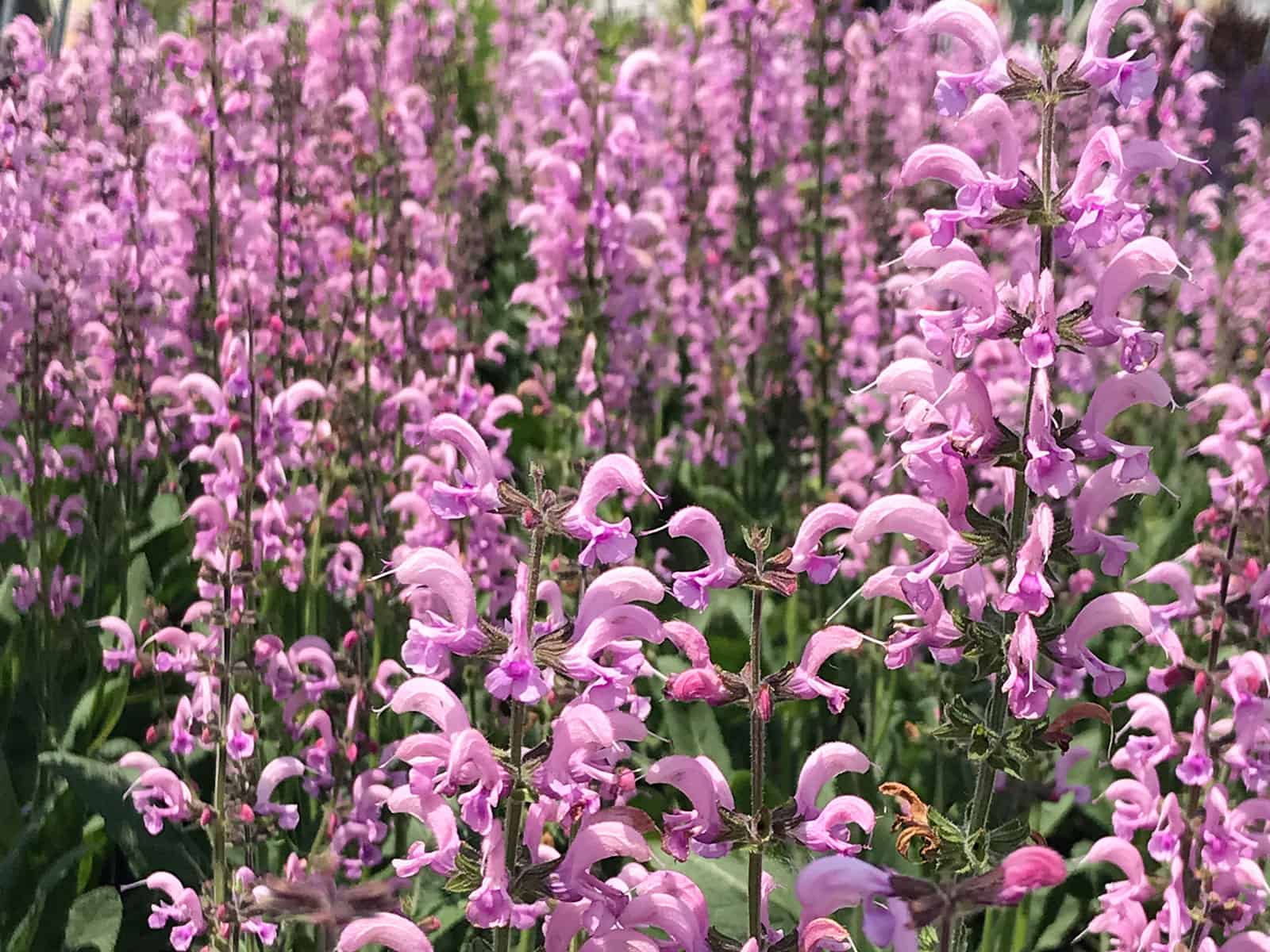
This beautiful pink sage was selected by plantsman Piet Oudolf, from his own garden. These lavender pink spiky flowers are invaluable in the summer garden. They are drought tolerant once established and attract butterflies and hummingbirds!
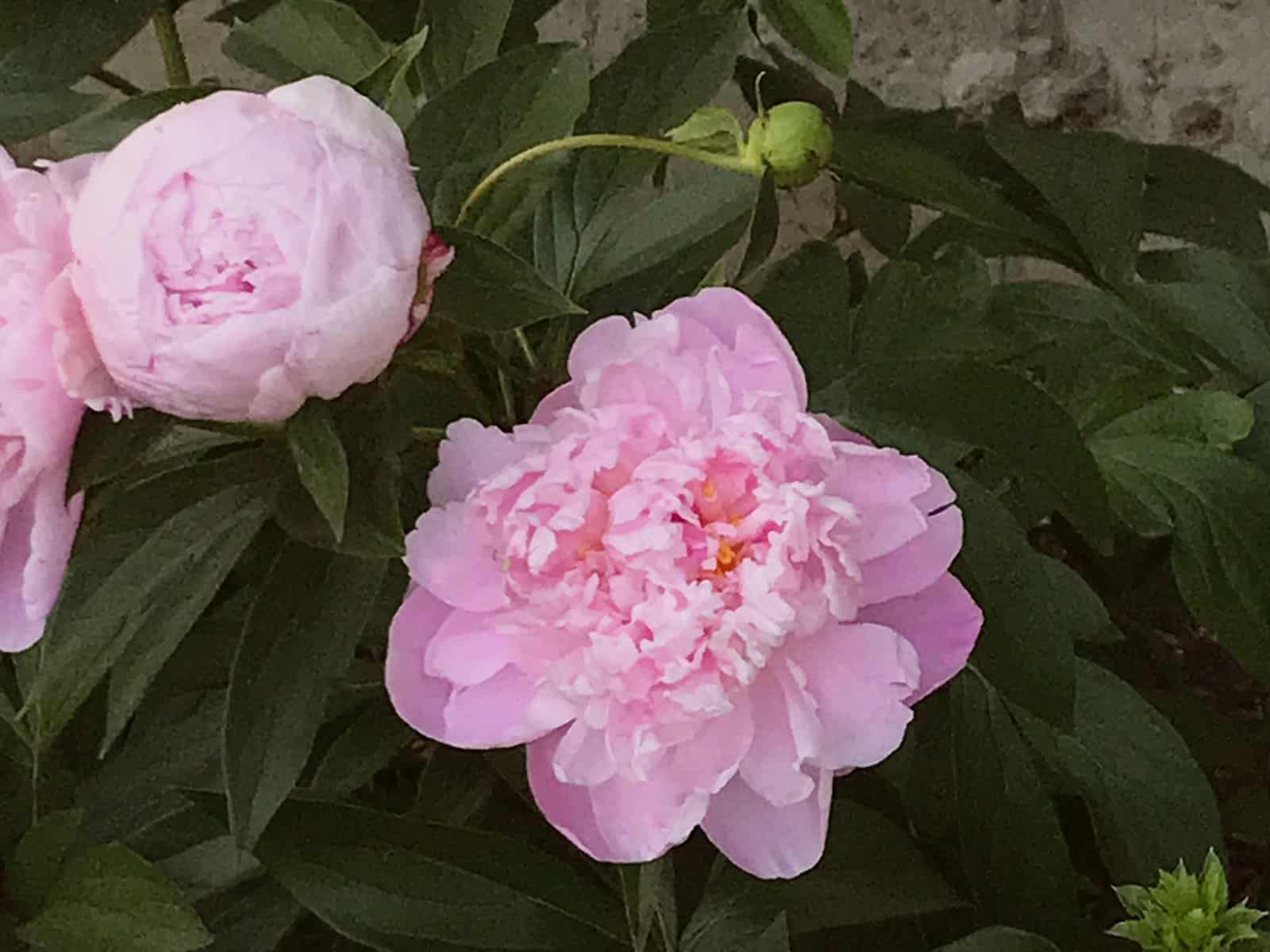
There are hundreds of different varieties of peonies. We selected ‘Sarah Bernhardt’ because many of our clients ask for a pink selection. These bring a lovely sweet scent to the garden when in bloom and make excellent cut flowers. It’s a long time favorite (since 1906) and dependable year after year.
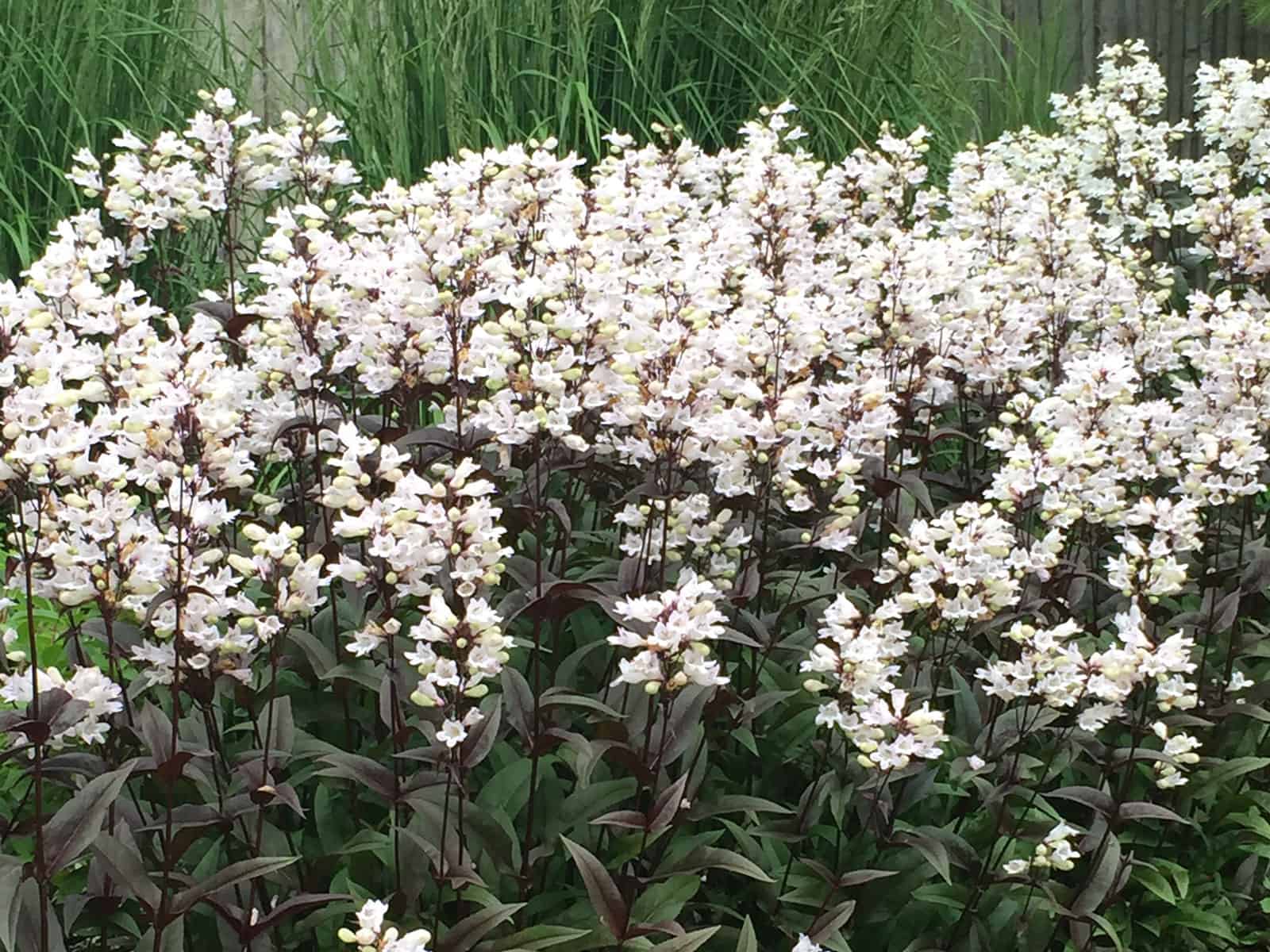
Developed at the University of Nebraska, this is an outstanding taller selection for the middle to back of a sunny border. It forms a mound of deep purple-red foliage, bearing spikes of bicolor soft and deep-pink bell-shaped flowers in summer. An easy border plant, also tolerant of heat and humidity. Terrific as a cut flower. In particularly rich soil this may need to be staked. A 2008 introduction from TerraNova Nurseries in Oregon. USPP#20013: unlicensed propagation prohibited. Registered with COPF.
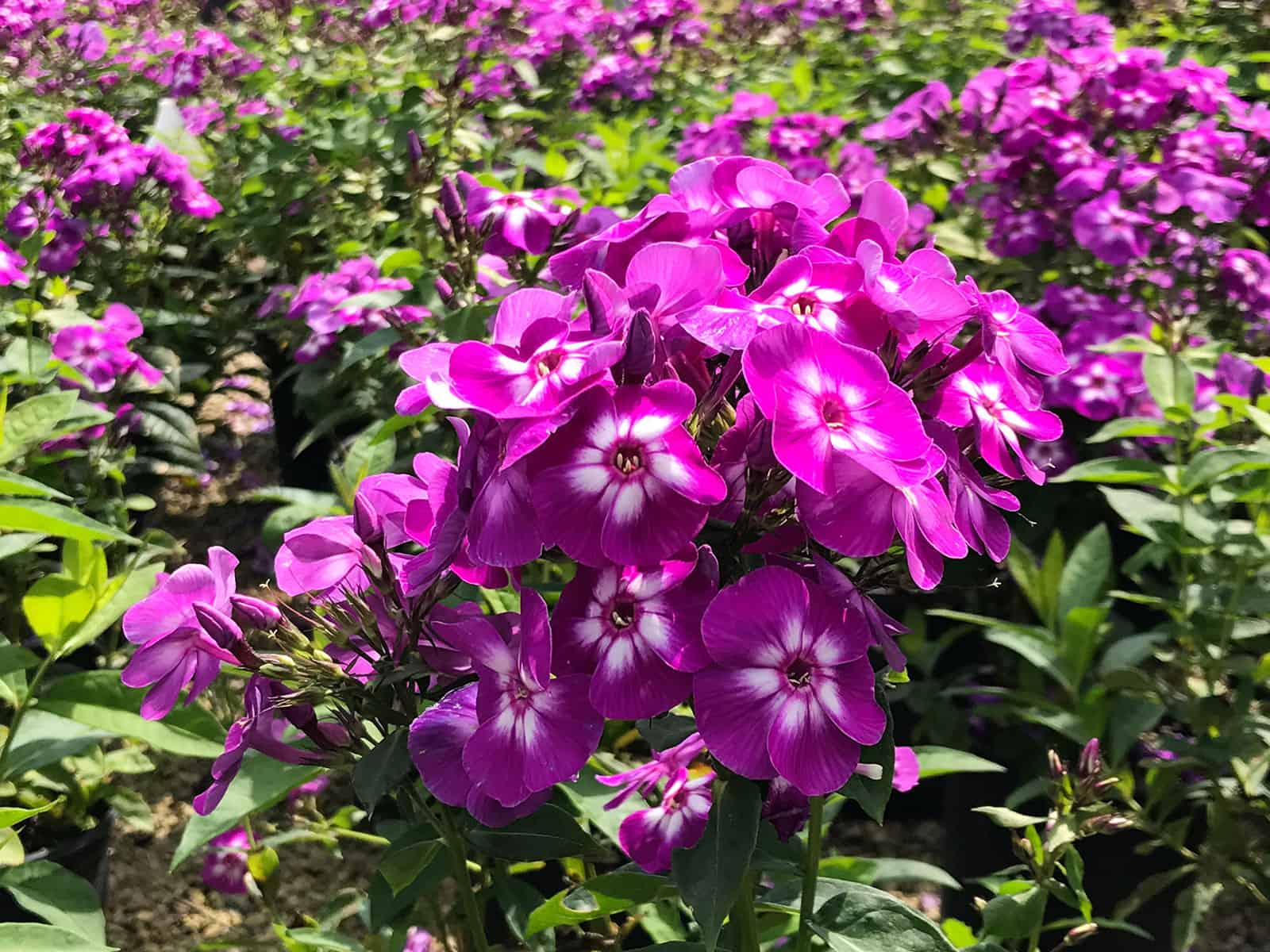
Laura garden phlox blooms in mid-summer with round heads of large, lavender-purple flowers that are delightfully fragrant. The foliage is mildew resistant and this perennial grows easily in compost enriched garden soil.
24-30″ tall x 18″ wide (cutting propagated). If you love flowers with rich, saturated colors (and who doesn’t!), Phlox ‘Laura’ is a “must have” cultivar for your perennial flower beds. The white-eyed deep lavender-purple flowers are are deliciously fragrant. The plant’s foliage has excellent mildew resistance making it a wonderful, low maintenance garden phlox. Plant ‘Laura’ in compost enriched garden loam and irrigate regularly.
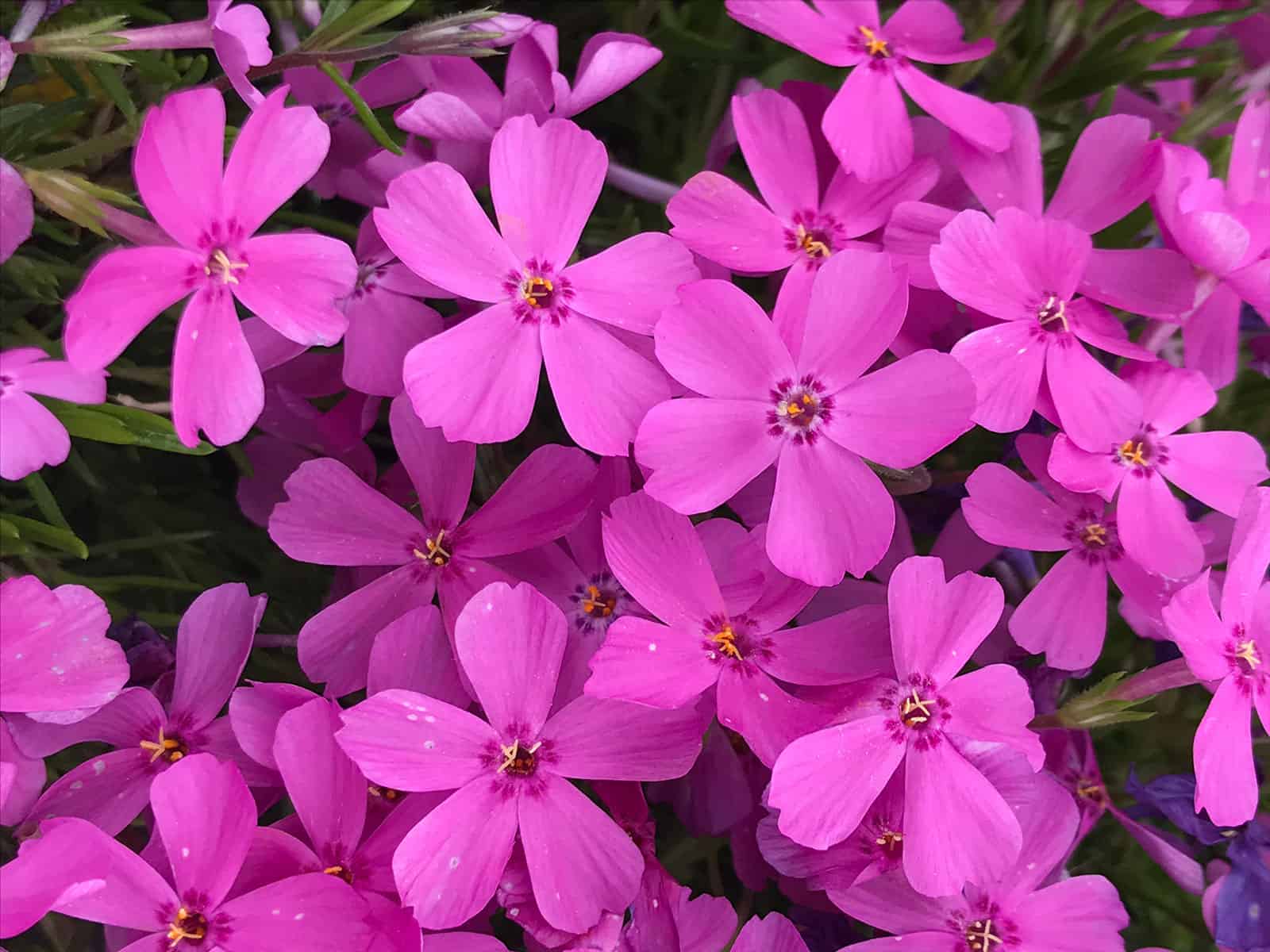
There are many selections of Moss Phlox, all of them forming a low mound or cushion of dark green needle-like leaves, smothered by tiny flowers in late spring. This variety produces a showy display of hot-pink flowers and has a medium-fast growth rate. Clip plants lightly immediately after blooming to encourage a dense habit. Wonderful in the sunny rock garden, for edging, or in mixed containers. Clumps may be ripped apart and divided in early fall, after 3 to 4 years. Requires good drainage. Drought tolerant, once established.
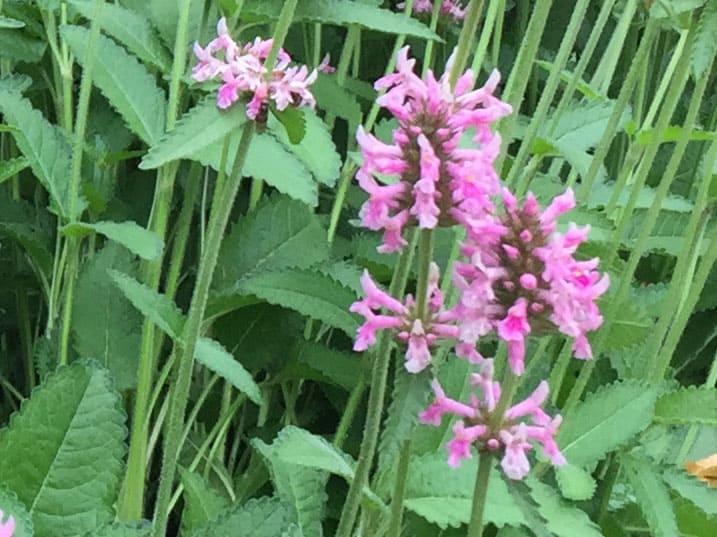
A cousin to the familiar Lamb’s-Ears, but not at all similar. This is a clump-forming perennial, forming a low mound of green foliage that remains attractive all season long. In early summer the upright spikes of ‘cotton candy’ pink flowers appear attracting bees to the nectar. Removing faded flowers will encourage more buds to form for weeks on end. An interesting and unusual perennial for near the front of the border, or in containers. Plants may be clipped back hard immediately after blooming, to tidy up the clumps for the rest of the season. Easily divided in early spring. Bred by Richard Hawke and introduced to the market by Chicago Botanic Garden. USPP#21436: unlicensed propagation prohibited.
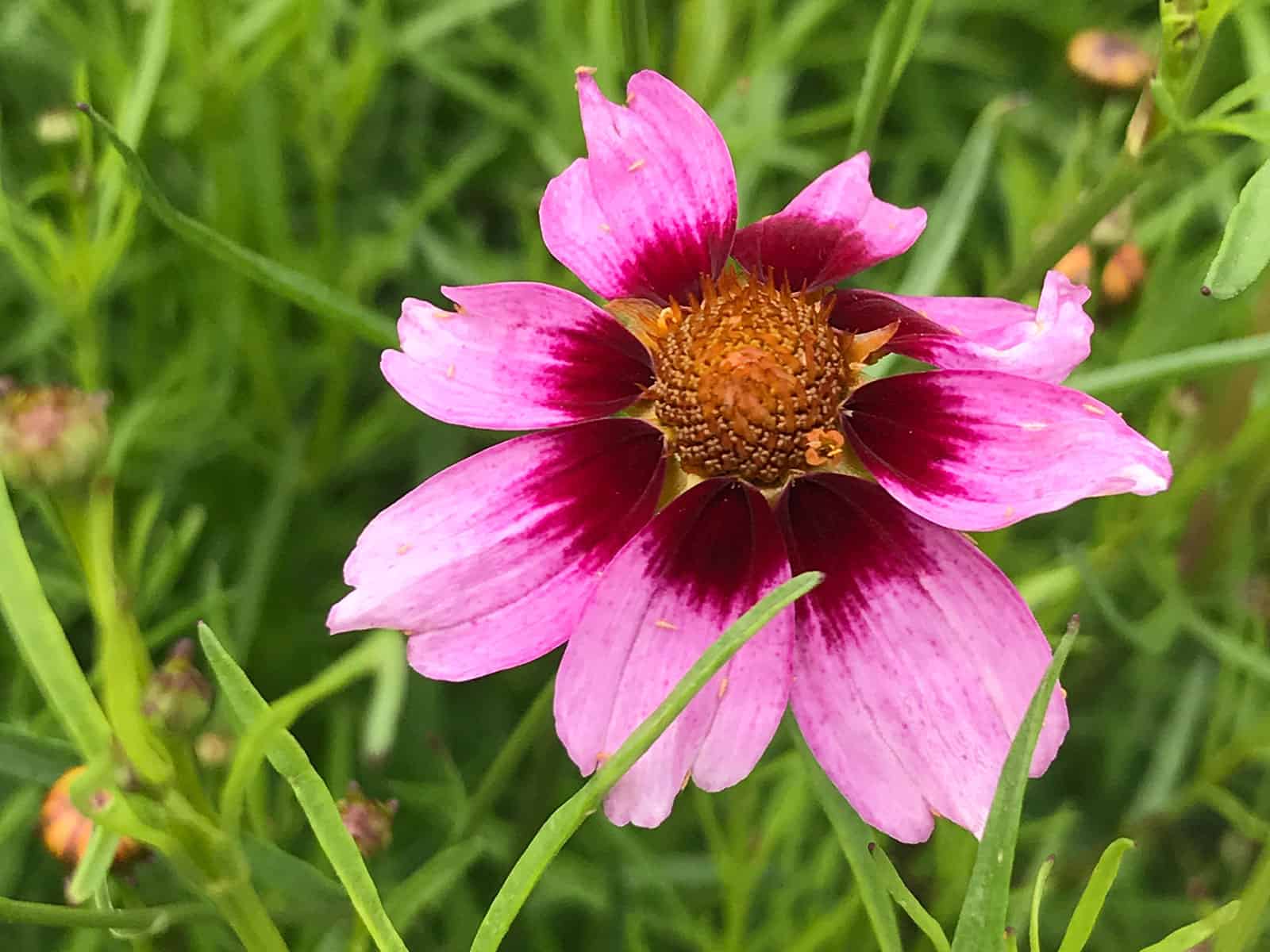
An improved selection of the Coreopsis ‘Rosea’. This forms a low, bushy mound of ferny green foliage, bearing masses of pink to rose colored daisy like flowers. Flowering begins in early summer and continues for weeks.
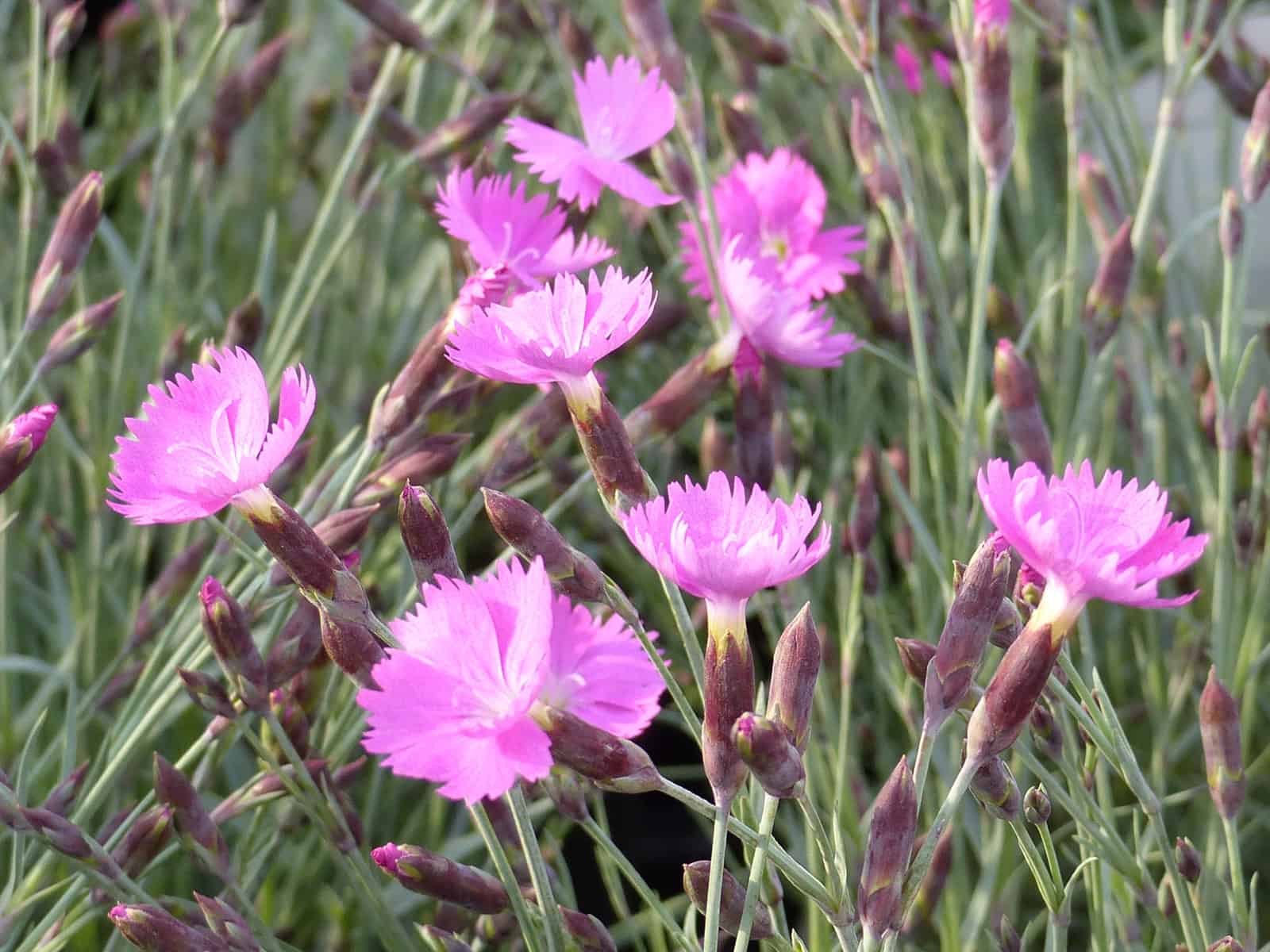
Culture: Easily grown in average, medium, well-drained soil in full sun. Prefers slightly alkaline soils. This hybrid tolerates heat and humidity (as well as some drought) better than most species of dianthus. Remove spent flowers to promote continued bloom. Avoid planting in areas with poor drainage where crowns will remain wet in winter.
Noteworthy Characteristics: Dianthus is a genus of over 300 species from Europe and north Asia to Japan. One species is native to North America. Most are evergreen and can be low-growing subshrubs, annuals, biennials or perennials. They are grown for their attractive, often fragrant, flowers. Many hybrids, often of complex parentage, have been made resulting in tens of thousands of cultivars.
Genus name comes from the Greek words dios meaning divine and anthos meaning flower.
The common name of pink for plants in the genus Dianthus is in probable reference to the fringed flower petal margins (they appear to have been cut with pinking shears) and not to flower color.
‘Feurerhexe’, commonly sold under the trade name of FIREWITCH, is a mat-forming cheddar pink that produces numerous, scented, bright magenta flowers singly atop wiry stems (to 6″ tall) arising from tufted mounds of grassy, deep blue, linear foliage. Blooms in spring with some intermittent repeat bloom in summer.
Problems: No serious insect or disease problems. Crown rot may occur in wet, poorly-drained conditions.
Garden Uses: Provides masses of color and good contrast for the rock garden or small border front. Good edging plant. Dense mats may be grown together to form an interesting ground cover. May also be grown on difficult sites such as stone walls.
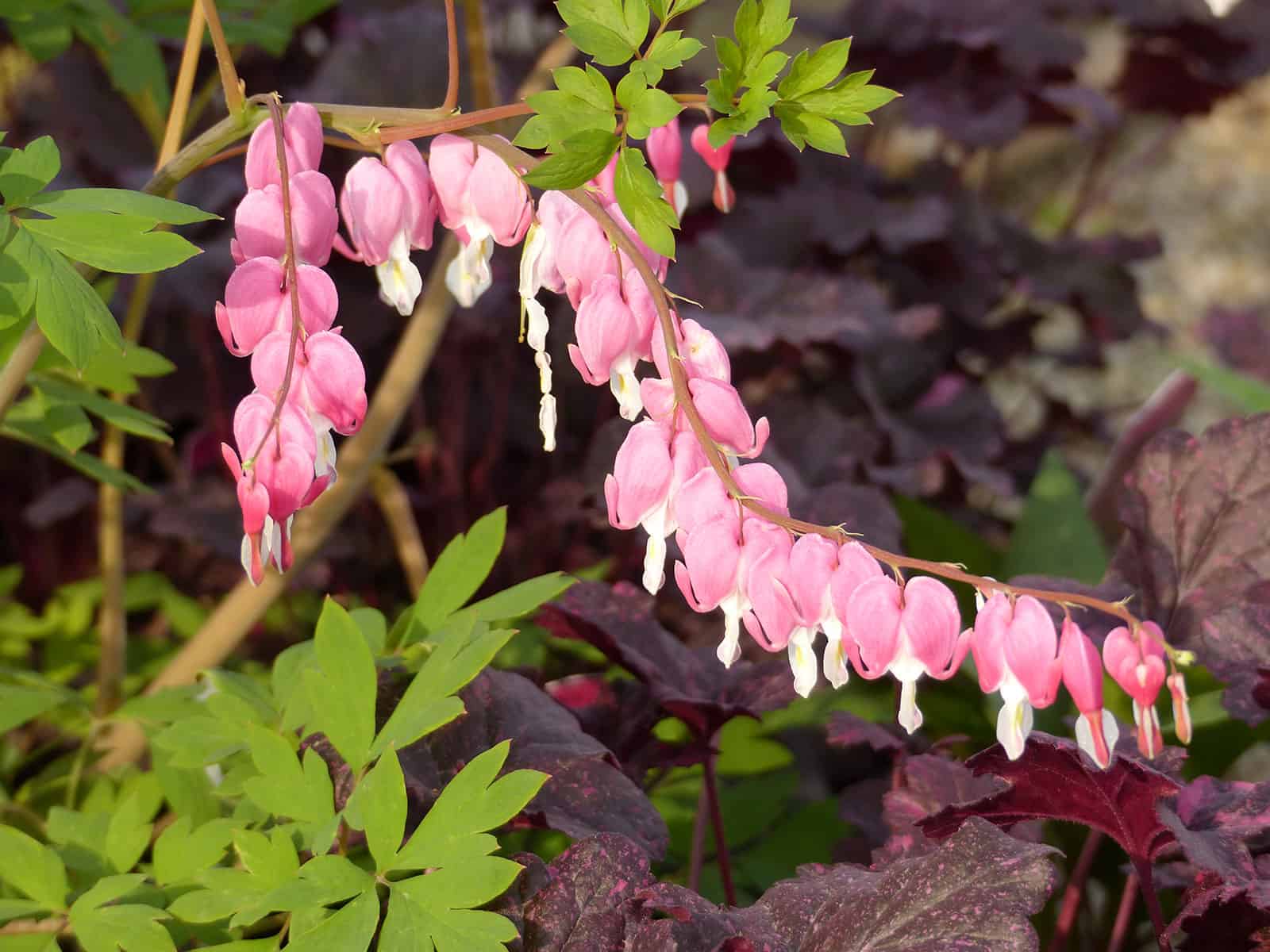
One of the most popular of old-fashioned garden plants, Bleeding Hearts burst into flower in late spring. Plants form a bushy, upright mound of light green foliage, with a somewhat ferny appearance. Dangling bright-pink locket flowers are held on arching stems, and these are excellent for cutting. Performs best in a rich, moist soil with partial shade, or at least protection from hot afternoon sun. After flowering, the plants should be sheared back to 6 inches tall, to rejuvenate the foliage. Even still, these often go completely dormant by midsummer, to return again the following spring. As an interesting sidenote, botanists have decided to change the name of the plant to Lamprocapnos spectabilis.
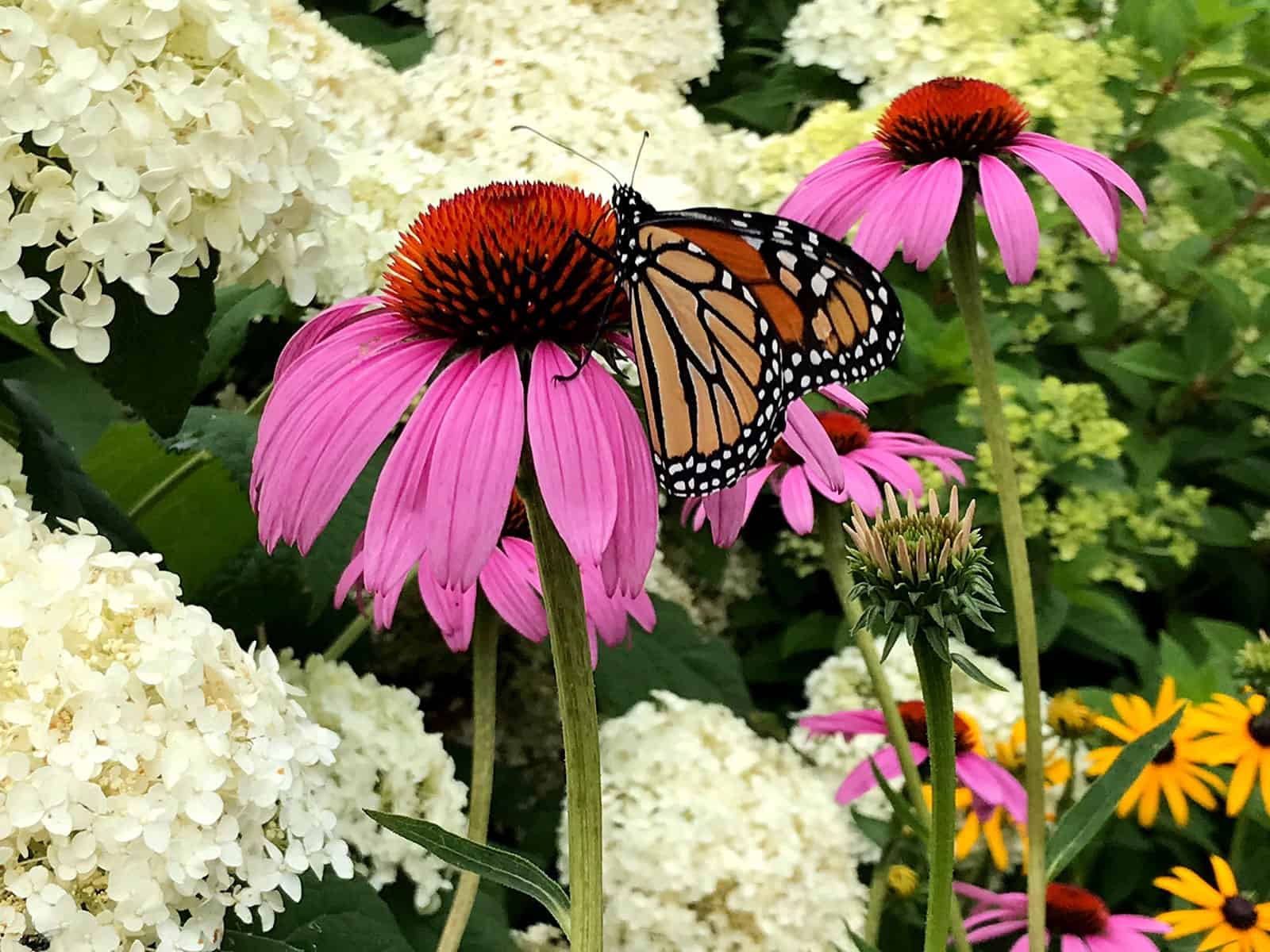
‘Magnus’ Echinacea boasts vibrant pink, ray-like flowers encircling deep-orange center cones, drawing an abundance of pollinators to your garden all summer long. Allowing the spent stems and flowerheads to remain through winter will attract birds as well. These resilient native plants, including ‘Magnus’, endure drought, clay, humidity, and harsh winter conditions with ease. Their straightforward cultivation makes them an excellent choice for both novice and seasoned gardeners. (Echinacea purpurea)